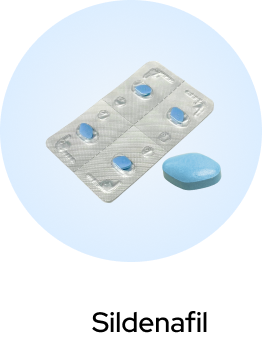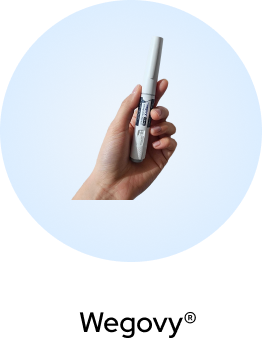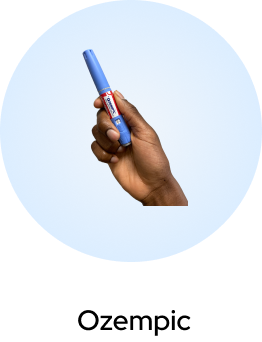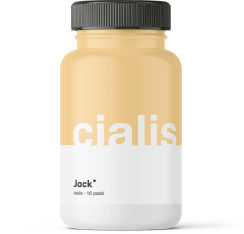It all starts with a glance in the mirror.
First, a slightly higher corner. Then the hairline starts creeping back. Before you know it, you’re Googling “how to prevent receding hairline in men under 40”. Ouch.
Seems relatable? Then you’re not alone.
While a receding hairline isn’t exactly what men under 40 would like to worry about, it is becoming a more common problem than you think. However, with the right information, you can easily prevent it.
Learn how to stop and prevent a receding hairline by understanding its causes, following effective prevention strategies, and selecting the best treatment options.
Understanding the Causes of a Receding Hairline
Factors such as genetics, age, and poor diet are just a few things that can cause a receding hairline. Understanding how they affect it can help address the issue right away.
- Genetics plays a major role in hairline recession. Your chances of developing male pattern baldness or a receding hairline increase if there is a family history.
- Dihydrotestosterone (DHT) has a significant impact on male pattern baldness, as it shrinks hair follicles, leading to thinning and weakening of the hair. Hair loss becomes more visible as your DHT levels increase.
- Hair loss is a natural part of aging as hair follicles produce less hair over time. Noticing your hairline receding as you age is normal.
- Stress is never healthy, especially for your hair. It can cause telogen effluvium, a condition characterized by excessive shedding of hair, usually triggered by stress or any traumatic events, like death in the family or job loss.
- A poor diet can accelerate hair thinning by blocking essential nutrients from reaching your hair, weakening it, and ultimately leading to hair loss. Having iron, zinc, or vitamin B12 and vitamin D deficiencies can also contribute to a receding hairline.
- Illnesses such as alopecia areata, thyroid problems, or scalp infections, as well as medications, can impact your hair’s health. If you’re taking medications for other conditions, you may notice visible changes in your hairline.
If you think you’re mistaking a receding hairline with a mature one, you can check out this guide on mature vs receding hairlines to help you understand the differences and determine the best course of action.
How to Prevent a Receding Hairline
Start taking actions in preventing a receding hairline by incorporating the following strategies:
Adopt a Hair-Healthy Lifestyle
Treat your receding hairline with lifestyle changes to promote hair growth and hair health:
- Maintain a balanced diet and incorporate foods rich in biotin and vitamins that support hair growth. That includes lean meats, eggs, fish, or beans, as well as fruits and vegetables with iron.
- Not getting enough sleep can increase cortisol levels, which in turn affect hair growth. Ensure you have at least 7 to 9 hours of sleep to help your body rejuvenate and nourish your hair follicles.
- Staying hydrated helps keep your hair and scalp healthy, which in turn helps prevent brittleness and breakage. Drink at least 8 cups of water a day. Have herbal teas, or eat cucumbers and watermelon for added hydration.
- Hair loss prevention includes managing stress. Achieve this by learning and practicing stress-management techniques such as deep breathing, meditation, and yoga.
Optimize Hair Care Habits
Treat your scalp like skin—because it is. And it needs just as much care. Don’t overwash your hair to prevent stripping the natural oils, which causes dryness. Certain shampoos can support scalp health, like sulfate-free shampoos. Use them and wash your hair 2-3 times a week.
Scalp Health & Circulation
Scalp massage can stimulate blood flow and circulation. Using a boar-bristle brush and applying topical solutions also allows more oxygen and nutrients to reach your hair follicles, providing them with the support they need to thrive.
Consider Supplements
Supplements like DHT blockers, biotin, saw palmetto, or collagen are excellent options for preventing or slowing the progression of a receding hairline.
Don’t know the best option for you? Jack Health can recommend appropriate supplements tailored to your needs, including DHT blockers, biotin to support hair strength, and collagen supplements to enhance scalp health.
You may also read more about a mature hairline to help determine if what you’re experiencing is actually a receding hairline, rather than just a natural maturation of your hairline.
Treatment Options to Stop a Receding Hairline
With plenty of options available to stop a receding hairline, how do you choose the best one? Here are some treatment options to consider and try as soon as possible.
Over-the-Counter Treatments
Minoxidil is an over-the-counter medicine approved by Health Canada. It is most effective for men under 40 and those who have just begun to notice a receding hairline. If you apply it twice a day to the affected area, Minoxidil may regrow hair at the hairline.
Other over-the-counter products include shampoos and serums that contain biotin, caffeine, or ketoconazole. Use biotin-enriched shampoos a couple of times a week, and apply caffeine-based serums to your scalp to enhance the effects of Minoxidil.
Prescription Medications
Prescription medications like Finasteride help prevent further hair loss by blocking and reducing DHT levels and promoting hair regrowth in men.
Get a prescription for medications like Finasteride by booking an online consultation at our Jack Health website, where we provide the right treatment for your needs.
Clinical Treatments
Before deciding on a clinical treatment for your receding hairline, ensure you choose one that is Health Canada-approved to guarantee a safe and effective solution for you.
One such treatment is the Platelet-Rich Plasma (PRP) Therapy, an expensive hair loss treatment that stimulates hair growth by re-injecting concentrated platelets, derived from the patient’s own blood, into the scalp. However, without applications to market PRP in Canada, it’s not a recommended treatment in the country.
On the other hand, the non-invasive treatment with a Capilus laser cap utilizes low-level laser therapy (LLLT) to energize hair follicles. It allows users to wear it over ordinary caps or baseball caps, and has received a Class II Medical Device License from Health Canada to ensure the brand’s safety and effectiveness.
Another widely used treatment is microneedling, which involves using tiny needles to penetrate the scalp. Despite its popularity, the usage of its home device has not been authorized by Health Canada. However, you can undergo the procedure at authorized clinics in the country.
Hair Transplant Surgery
Hair transplants are an option for advanced cases of receding hairline. Both FUE (Follicular Unit Extraction) and FUT (Follicular Unit Transplantation) relocate healthy hair follicles to the balding areas. Think of it as replanting hair where it naturally grows.
FUE extracts individual follicles and causes minimal scarring, while FUT removes a strip of skin for larger grafts, which leaves a more visible scar. Both procedures are effective, and the choice will depend on personal preferences and the extent of hair loss.
Natural and Holistic Remedies
Are natural and holistic remedies effective in treating a receding hairline? Yes, however, while they are beneficial, these remedies are generally considered complementary to more established hair loss treatments.
For the optimal results, it’s best to use them in conjunction with proven treatments that promote hair health and regrowth.
Such remedies, including scalp brushing and the use of rosemary oil and essential oils, help improve circulation and promote a healthy scalp.
When to See a Dermatologist or Trichologist in Canada for a Receding Hairline
Don’t wait until it’s too late because a receding hairline can be slowed with early treatment.
Take the case of 35-year-old Mark, who noticed his hairline receding in his early 30s. He first tried over-the-counter solutions and made some diet changes. But after a few years, his hairline continued to thin quickly.
By the time he saw a dermatologist, his hair loss had progressed to a point where he needed a hair transplant, one he could’ve avoided if he had sought help earlier.
It’s an important reminder that early intervention can prevent severe hair loss and avoid invasive treatments down the road. Learn how to tell the difference between hair loss and hair shedding to help you better assess the situation and decide whether to seek professional advice.
Visit our Jack Health website to schedule a consultation with dermatologists who can recommend medical treatments for your needs.
Key Takeaways
- Hormones, stress, and genetics play a major role in hairline recession, but can still be reversed with early intervention.
- Maintaining a balanced diet, getting proper sleep, staying hydrated, and managing stress are essential in preventing hair loss.
- Seeking professional help can prevent severe hair loss and potentially avoid invasive treatments in the future.
Frequently Asked Questions
Does Wearing Hats Cause Hair Loss?
No, wearing a hat doesn’t cause hair loss. There is no scientific evidence to suggest that wearing hats blocks hair follicles or causes shedding.
Is a Receding Hairline Always Permanent?
No, having a receding hairline is not always permanent. Addressing the issue early on by making lifestyle changes and taking medications can contribute to long-term prevention. The earlier you take action, the better the outcome will be.
Do Hair Transplants Permanently Fix a Receding Hairline?
Yes, hair transplants can provide a permanent fix for a receding hairline. However, keep in mind that non-transplanted hair may also thin over time, so ongoing care and consistency in treatment are needed to improve results and maintain overall hair health.




















 (US)
(US)



